MARIANI’S
Virtual
Gourmet
April
1, 2018
NEWSLETTER

❖❖❖
IN THIS ISSUE
IN
THE BEGINNING THERE WERE
JAMESTOWN AND YORKTOWN
By John Mariani
NEW YORK CORNER
LITTLE FROG
By John Mariani
NOTES FROM THE WINE CELLAR
CONFUSED ABOUT GLOBAL WARMING?
JUST ASK A TUSCAN WINEMAKER
By JOHN MARIANI
❖❖❖
IN THE BEGINNING THERE
WERE JAMESTOWN AND
YORKTOWN, VIRGINIA
By John Mariani
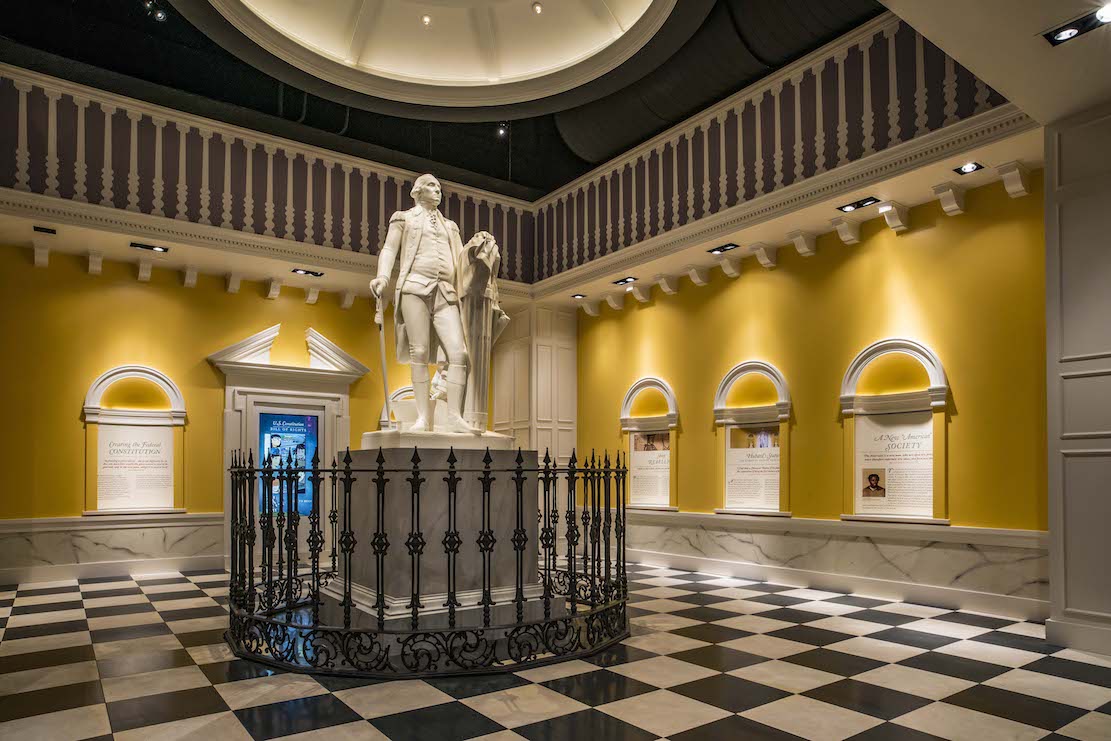
Yorktown American Revolution Museum
One need not be a partisan to believe our Republic is at a dangerous crossroads, although bipartisanship is what has always made this country capable of enduring everything from world wars to depressions. Remembering how it all began—and how difficult those beginnings were—has been well preserved in the Jamestown Settlement and the American Revolution Museum at Yorktown, Virginia.
 In several
respects, what is very new about Jamestown is what
is very old, meaning that constant archeological
progress is being made using the most modern
technologies to trace the history of this 17th
century settlement. Created in 1957, Jamestown
Settlement, like nearby Historic Colonial
Williamsburg, was made to be a living history
museum that contains a recreated James Fort, a
Powhatan Indian village, and replicas of the
original English settlers’ ships, the Susan
Constant, Godspeed
and
Discovery (left)
In several
respects, what is very new about Jamestown is what
is very old, meaning that constant archeological
progress is being made using the most modern
technologies to trace the history of this 17th
century settlement. Created in 1957, Jamestown
Settlement, like nearby Historic Colonial
Williamsburg, was made to be a living history
museum that contains a recreated James Fort, a
Powhatan Indian village, and replicas of the
original English settlers’ ships, the Susan
Constant, Godspeed
and
Discovery (left)
The archeological excavations go on at the adjacent Historic Jamestowne (note the last “e”), run by the National Park Service and Preservation Virginia. (Preservation Virginia is the group that supervises the archeology. The Park Service owns the other acreage.)
The settlement was established on May 14, 1607, to
be permanent, although several failures and
abandonments occurred, as well as a war that
annihilated the Paspahegh Indian tribe in the area
and in 1676 the burning down of the town during
Bacon’s Rebellion.
It immediately became Virrginia’s colonial
capital; the first slaves arrived in 1619.
But by 1699 Jamestown’s power had declined as the
capital relocated to Williamsburg, and in the next
century Jamestown ceased to exist as a working
settlement. 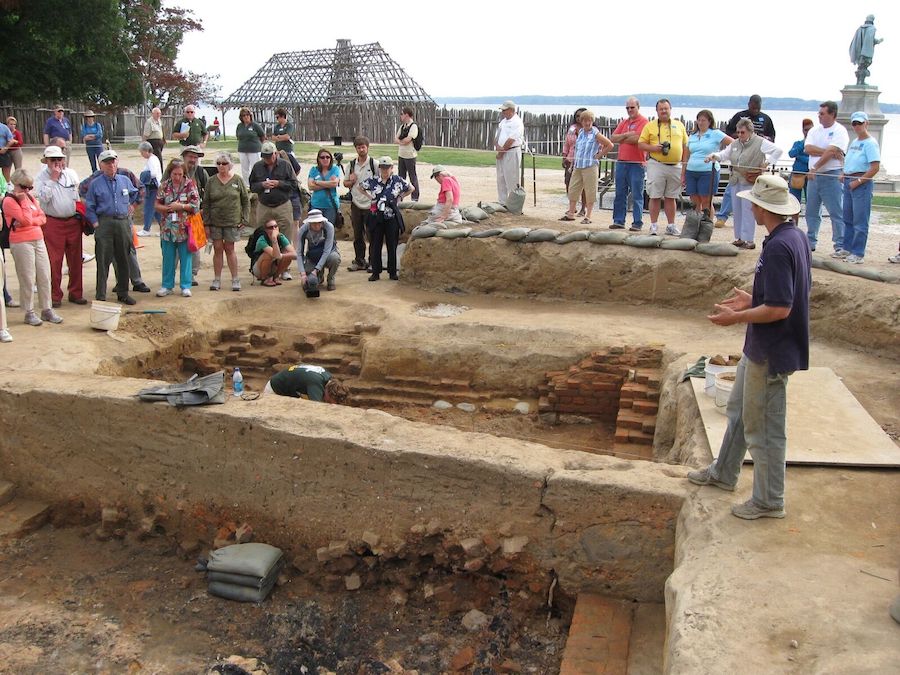
The galleries and exhibitions are
beautifully done at Jamestown, starting with the
docudrama “1607: A Nation Takes Root,” and the
exhibits focus on the three cultures--native,
European and African (the Powhatan Native
American was the “parent” culture and a
Pocahontas exhibit just closed this winter), “The
Crossing,” and “From Africa to Virginia.”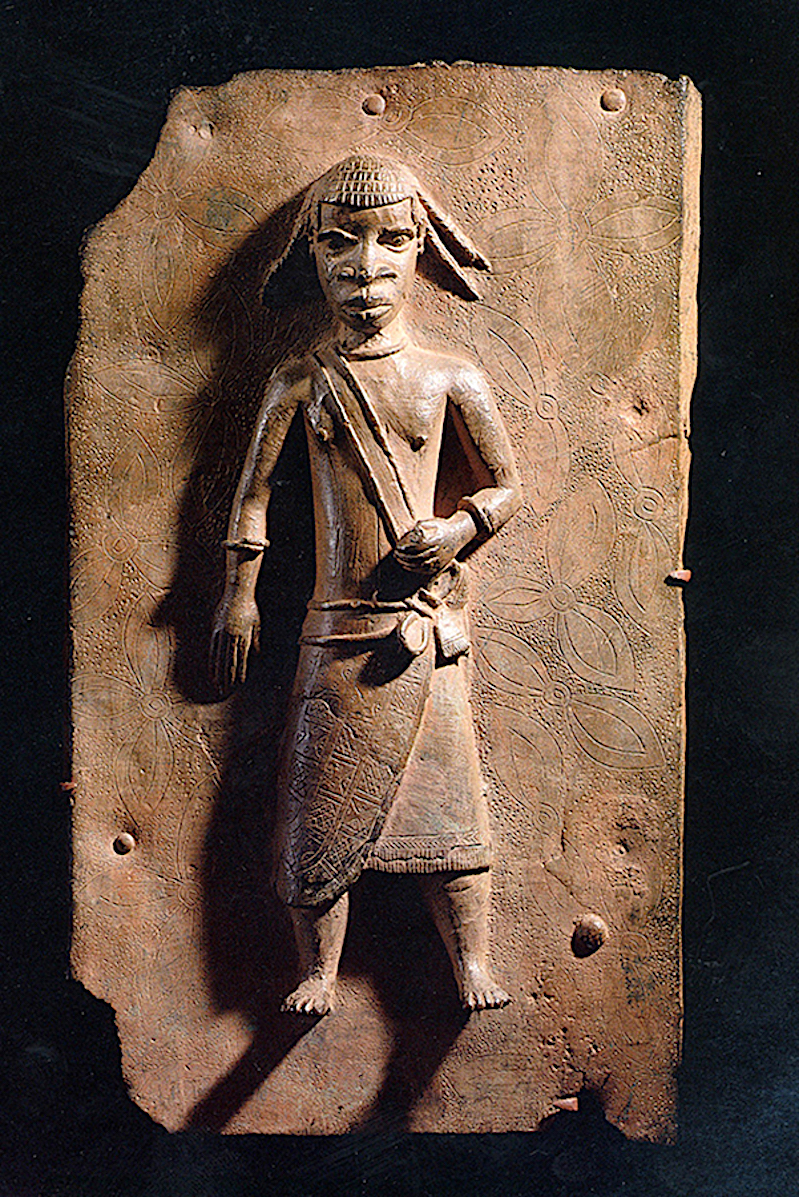 The
history of Jamestown as a tobacco-producing colony
is described—it was often used as cash, which led
to wealth but ultimately a lack of diversity in
the economy.
Outside, the Powhatan Indian Village
features houses and archeological artifacts of how
the Native Americans lived prior to the arrival of
the English.
Layer by layer more is being revealed every
year, and the sight of so many students digging
carefully through centuries of dirt and building
materials is inspiring.
The
history of Jamestown as a tobacco-producing colony
is described—it was often used as cash, which led
to wealth but ultimately a lack of diversity in
the economy.
Outside, the Powhatan Indian Village
features houses and archeological artifacts of how
the Native Americans lived prior to the arrival of
the English.
Layer by layer more is being revealed every
year, and the sight of so many students digging
carefully through centuries of dirt and building
materials is inspiring.
A new exhibit,
"TENACITY: Women
in Jamestown and Early Virginia," will open in
November this year.
A copper alloy figure from the
Kingdom of Benin at the Jamestown Settlement
gallery.
Meanwhile,
at Yorktown, where the last battle of the
Revolutionary War was fought, they have a new,
state-of-the-art American Revolution Museum that
sprawls over 80,000 square feet of the rolling
landscape and offers art work, historic dioramas,
films and a recreation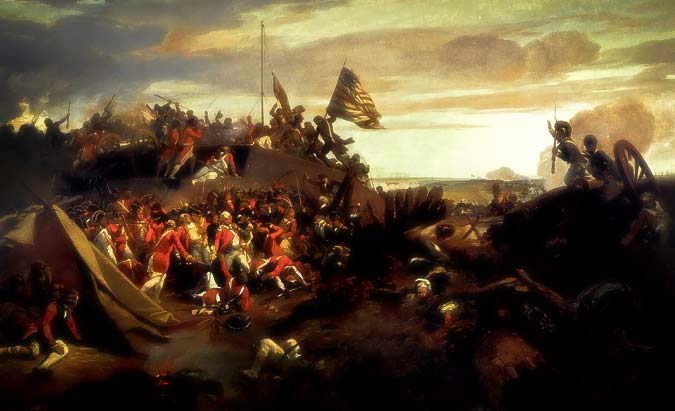 of the white-tented
military camp of the American army, which, with
help from the French army and fleet, roundly
defeated the British on October 19, 1781.
Washington’s troops pierced the British outer
defenses, bringing to bear such a force of
artillery that the British general Lord Cornwallis
was forced to negotiate a peace to end the war,
resulting in the finality of the Treaty of Paris
in 1783.
of the white-tented
military camp of the American army, which, with
help from the French army and fleet, roundly
defeated the British on October 19, 1781.
Washington’s troops pierced the British outer
defenses, bringing to bear such a force of
artillery that the British general Lord Cornwallis
was forced to negotiate a peace to end the war,
resulting in the finality of the Treaty of Paris
in 1783.
The Yorktown attraction is known for its collection of uniforms, firearms and living history, with military artillery firing each day at 11 a.m. and 3 p.m. Shows on the food culture of the Colonial and Revolutionary era are held throughout the year, and a working farm demonstrates the way people harvested, cooked and ate from homemade utensils.
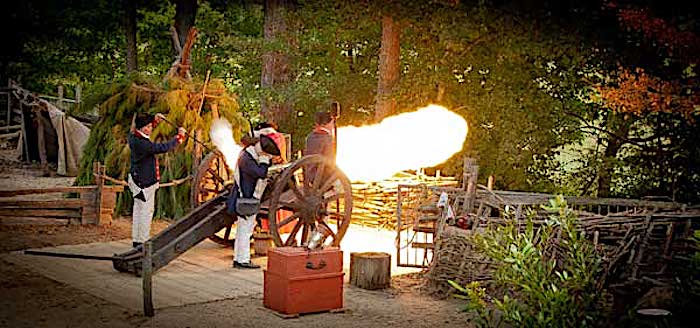 The
museum’s 22,000-square-foot layout leads from one
era to another, its walls and floors first
showcasing British Colonial America as of 1763 and
an interactive map of the United States in 1791.
Famous battles are described, how they began and
developed, in a 170-seat museum theater, beginning
with the film “Liberty Fever” in a moving panorama
containing live-action movie scenes. The “First
Great Victory”—the Battle of Saratoga in 1777—is
actually shown within an army tent, while “The
Siege of Yorktown” is shown on a 180-degree
surround screen theater at the American Revolution
Museum at Yorktown.
The
museum’s 22,000-square-foot layout leads from one
era to another, its walls and floors first
showcasing British Colonial America as of 1763 and
an interactive map of the United States in 1791.
Famous battles are described, how they began and
developed, in a 170-seat museum theater, beginning
with the film “Liberty Fever” in a moving panorama
containing live-action movie scenes. The “First
Great Victory”—the Battle of Saratoga in 1777—is
actually shown within an army tent, while “The
Siege of Yorktown” is shown on a 180-degree
surround screen theater at the American Revolution
Museum at Yorktown.
From there “The New Nation” and “The American
People” bring our history up through the 19th
century and how the new country was so influenced
by immigrants and  internal
migration westward.
internal
migration westward.
One expects grand yarns and great victories out of the American Revolution, but I was delighted by some of the lesser artifacts that told the story in more endearing ways, like the first portrait of a black slave, named Ayuba Suleiman Diallo, by William Hoare circa 1733; the first book of poems by an African-American woman named Phillis Wheatley, albeit by a London publisher in 1773; a silver teaspoon stamped with the motto “I love liberty” (1773); and a lap desk once used by Gen. Francis Marion, known as the “Swamp Fox.”
Both Jamestown and Yorktown show how hard curators, linked into the newest technology, have worked to bring history alive for visitors, with a clear and obvious mission to entice and entertain young people whose urge is never to turn their eyes from their iPhones. In the sound and light, shadow and music of these stellar museums lies both the truth and the emotional commitment to our ancestors
❖❖❖
By John Mariani
LITTLE FROG
322 East 86th Street (near First Avenue)
347-537-5786
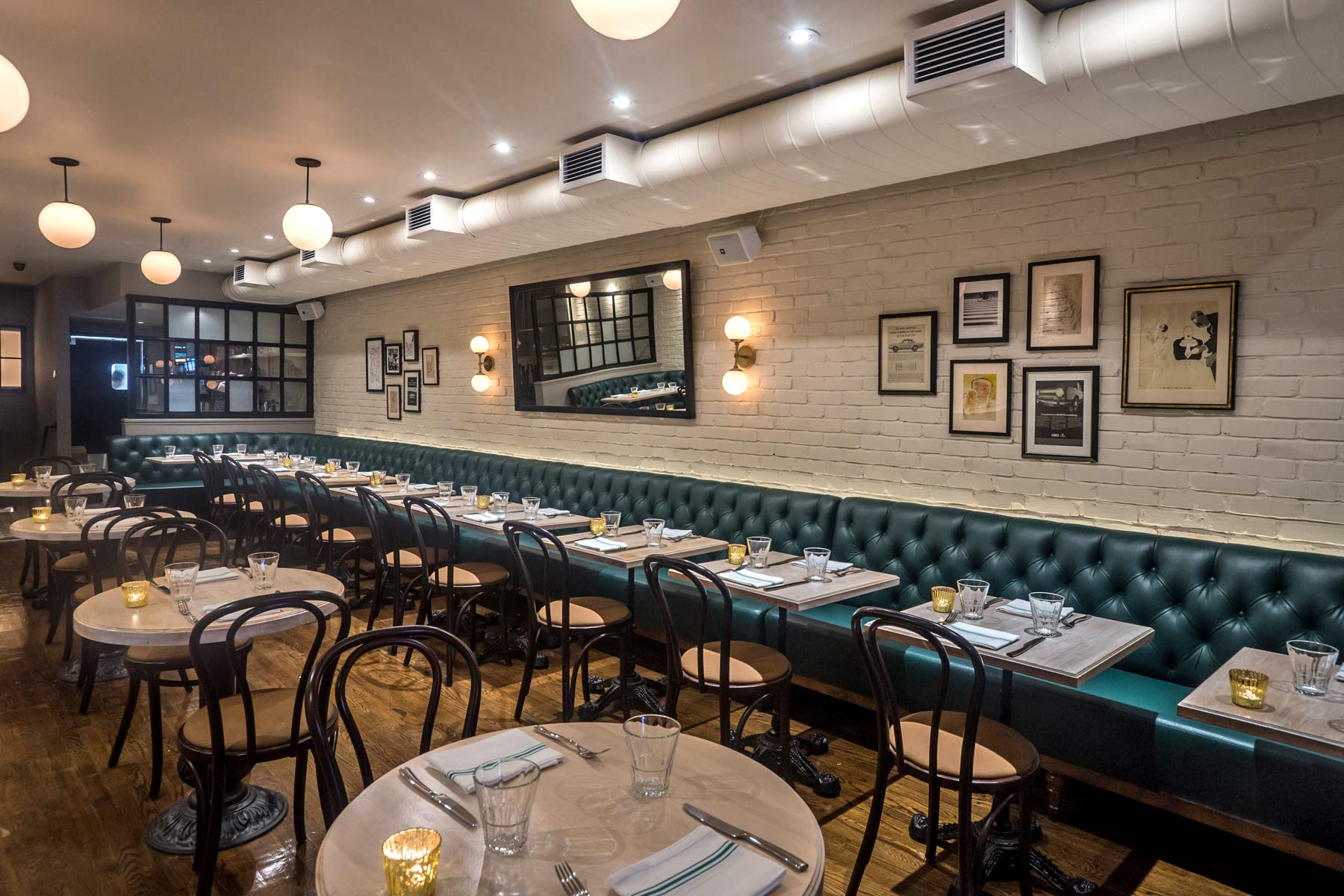
Photo: Paul Wagtouicz
A little over a year ago François Latapie opened Little Frog on the Upper East Side at a time when construction of the way overdue Second Avenue Subway was disrupting every business in the area. Noise, dust, steam, barriers and trenches made it impossible to put tables outside or draw traffic. Still, Little Frog succeeded largely by appealing to neighborhood regulars, many of whom knew Latapie as the suave, effusive fellow who had once been maître d’ at Le Cirque and La Goulue.
 Now that the subway is done, the
Yorkville neighborhood is back to being fairly
quiet, a good place for a stroll along broad East
86th Street, and I was so happy to see that the
German meat store Schaller & Weber, the
Hungarian restaurant Red Tulip and Heidelberg
German restaurant are still open on a block in
Yorkville that once teemed with Eastern European
groceries, cafes and restaurants.
Now that the subway is done, the
Yorkville neighborhood is back to being fairly
quiet, a good place for a stroll along broad East
86th Street, and I was so happy to see that the
German meat store Schaller & Weber, the
Hungarian restaurant Red Tulip and Heidelberg
German restaurant are still open on a block in
Yorkville that once teemed with Eastern European
groceries, cafes and restaurants.
Little Frog is a handsome, long slip of a white
brick-walled room, seating 75, with a cheery bar
up front, green tufted banquettes, bentwood chairs
and the requisite tilted mirrors. The sound level
in the room is pretty good, but the piped in music
is wholly unnecessary. No one goes to a French
bistro for the canned music, unless it’s Piaf or
Aznavour.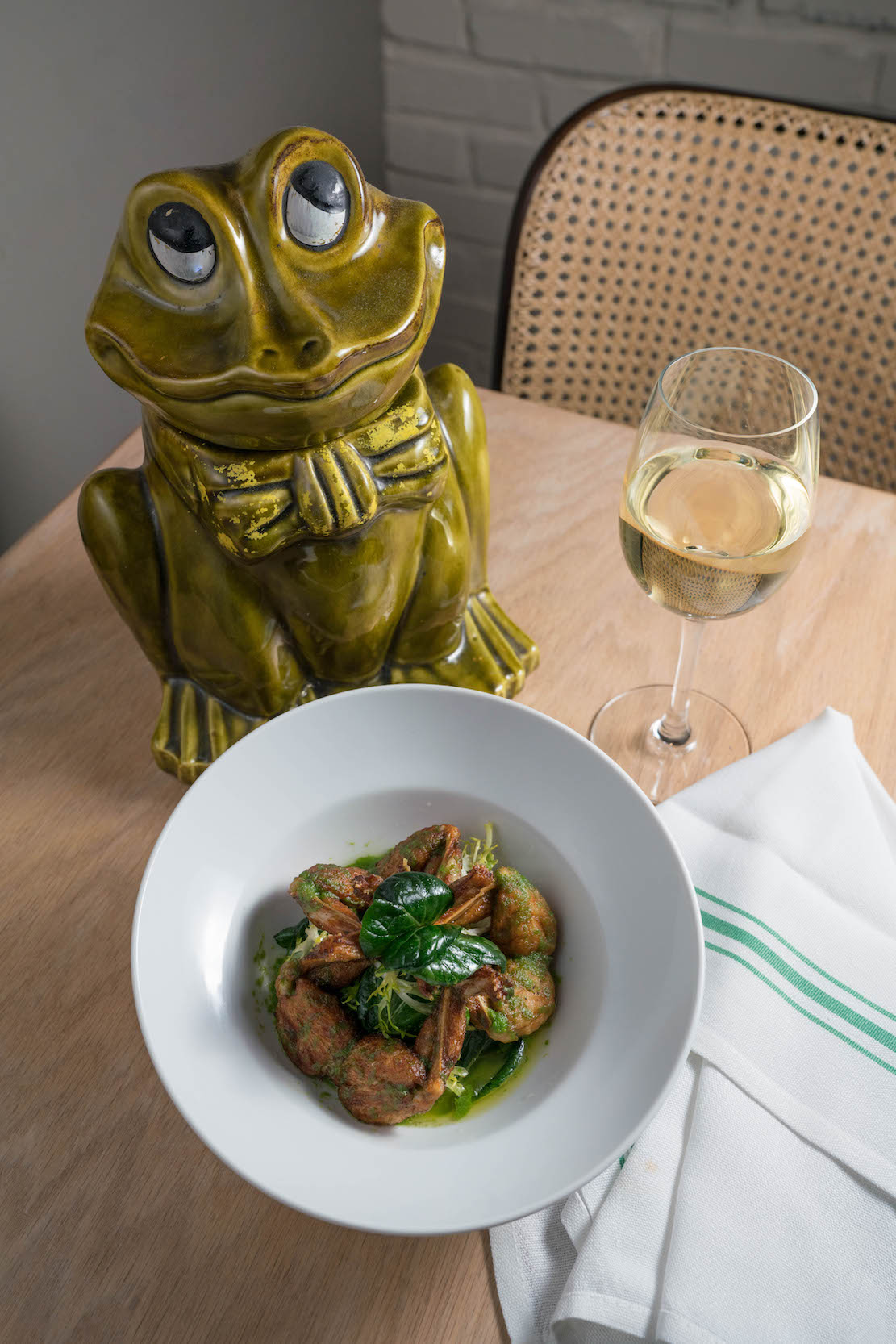
Latapie is the consummate host, a gentlemanly mix of French gentility and American affability, and Chef Xavier Monge proves that consistency in every dish is really the key to this kind of cuisine. He works hard to obtain first-rate ingredients, evident in yellowfin tuna tartare with seaweed salad, wasabi dressing and sesame tuile ($22). Frogs’ legs (right)—once a staple of French restaurants—make a welcome re-appearance at Little Frog, nicely garlicky, sprinkled with parsley and served with tatsoi greens ($16). Asparagus out of season are risky, but Monge somehow sources very good ones, which he nestles in a buttery pastry shell with a lustrous Hollandaise mousseline ($16).
There is also a small section of tapas (all $10),
which include hot shishito peppers given a
delightful sweet glaze ($10) and thinly sliced
pink Iberico ham on a crunchy garlic-swabbed
baguette. Fat
tiger shrimp get a shot of sea salt to perk them
up ($10), and best of all was a plump fritter
enclosing oozing Comté cheese (below).
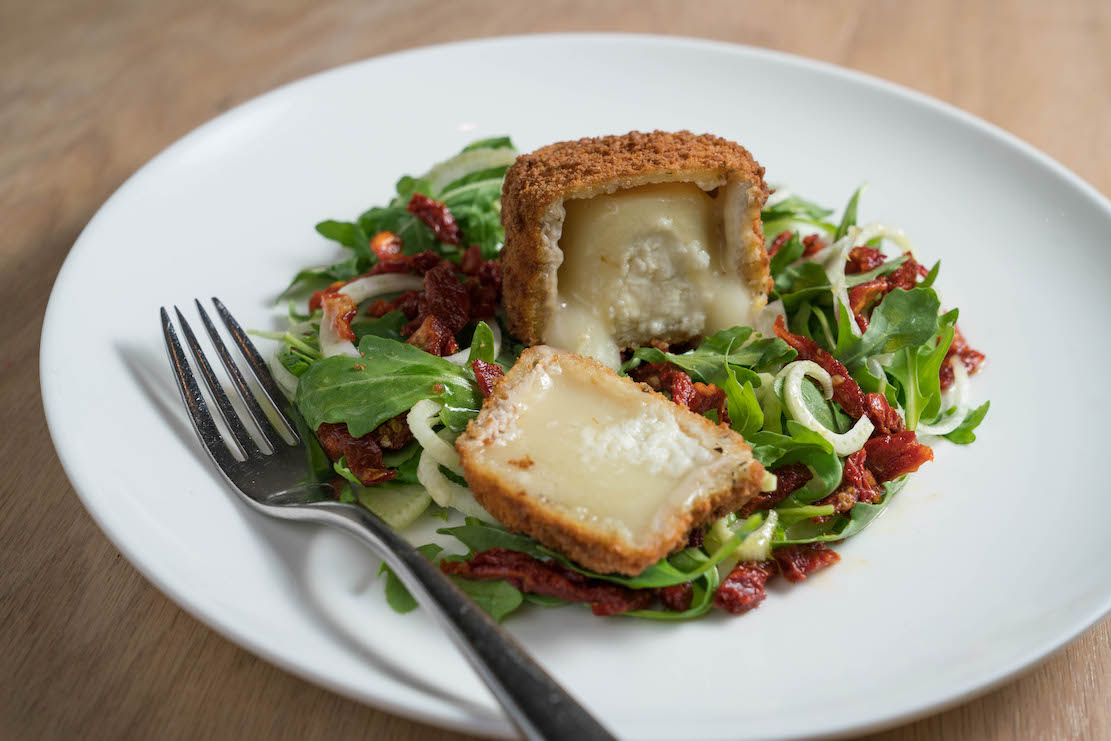 Among
the “Butcher’s Choices” is a deliciously juicy
roasted chicken scented with herbes de
Provence and served with green beans, garlic
and shallots ($25). It’s good to see Monge does
not hold back on the garlic as too many French
bistro cooks do.
Among
the “Butcher’s Choices” is a deliciously juicy
roasted chicken scented with herbes de
Provence and served with green beans, garlic
and shallots ($25). It’s good to see Monge does
not hold back on the garlic as too many French
bistro cooks do.
Rack of lamb
($42) is available for one person, given some
hardy ballast with merguez sausage and couscous. As it
should be, hanger steak is nicely chewy and full
of flavor, which we ordered au poivre,
with hand-cut French fries ($36). I’m
always hesitant to order the ubiquitous branzino
on a menu, but Little Frog’s is one of the best in
the city, grilled whole and boned, served with
arugula and a beurre blanc tinged with lemon and tobiko  roe ($29). As a side dish, have the
macaroni gratin in a béchamel sauce ($10) or the
sautéed wild mushrooms, with more garlic persillade ($13).
roe ($29). As a side dish, have the
macaroni gratin in a béchamel sauce ($10) or the
sautéed wild mushrooms, with more garlic persillade ($13).
All the cherished classics of French bistro desserts are here: an ethereally light île flottante (right), a good crème caramel and terrific chocolate croustillant. Only an apple tart was disappointing, for its lack of caramelization and its soggy crust.
In addition to the food menu, Little Frog’s wine list has changed for the better, now more gently priced than before, and, among its fifty bottlings are an applaudable number under $60 and only a handful priced over $100.
So, Little Frog survived all the bureaucratic red tape and deep-down subway construction put in its way. Latapie’s faith in his neighborhood and his well-known hospitality have made Little Frog the true French bistro this stretch of Yorkville really needed.
Open for dinner nightly, for brunch Sat. & Sun. There is a $29 three-course fixed price dinner with wine from 5 p.m. to 6:15 p.m. nightly.
❖❖❖
Don’t Believe in Global Warming? Just ask a Tuscan Winemaker
By John Mariani
It’s a question I’ve put to every winemaker I’ve interviewed over the past five years. “Have you seen the effects of climate change and global warming in your region?”
Almost everyone answers yes, to one degree or another, and recently even the winemakers of Bordeaux and Burgundy, where they have always craved sun and heat, have begun having doubts about their benefits. In warmer climates the effects are now rigorously being monitored and vintners express both concern and ignorance as to what will happen just within the next decade.
Over dinner in New
York, I posed these questions to Stefano Ruini,
57 (right),
Technical Director and Enologist since 2017 of
Luce 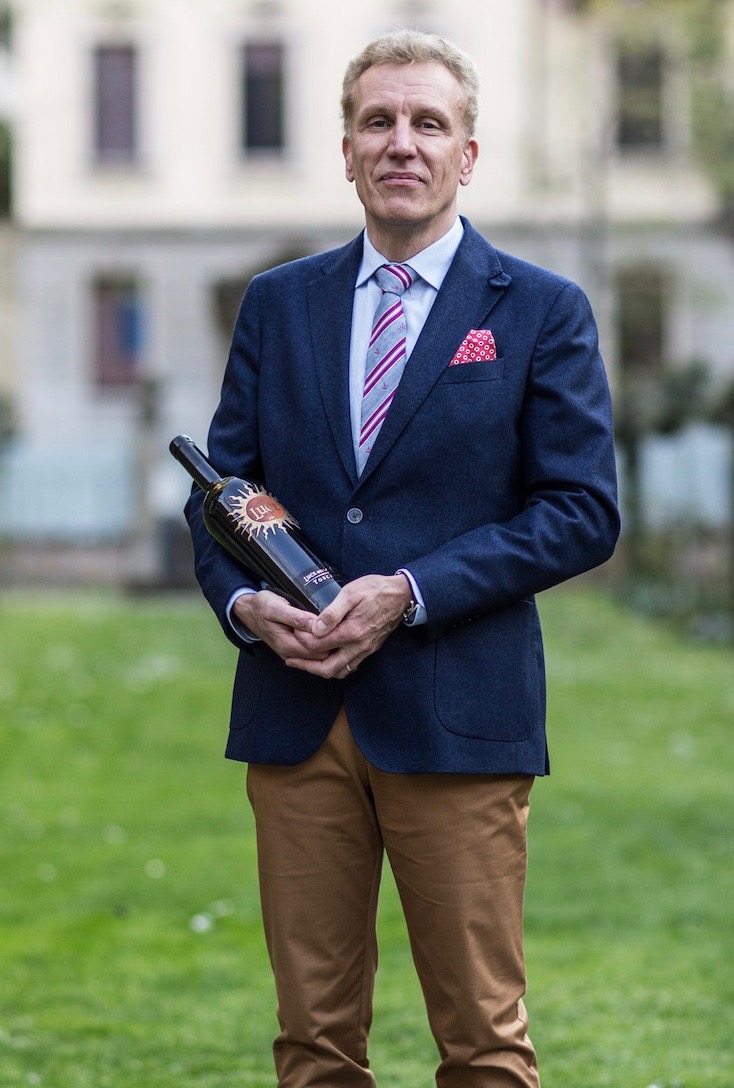 winery in Montalcino,
Tuscany, where Sangiovese grape vine clones
(hundreds tested for their sturdy quality by
Banfi Vintners in the 1980s and donated to the
region’s other wineries) transformed the
region’s wine production.
winery in Montalcino,
Tuscany, where Sangiovese grape vine clones
(hundreds tested for their sturdy quality by
Banfi Vintners in the 1980s and donated to the
region’s other wineries) transformed the
region’s wine production.
“Climate is becoming much more of a question than clones of grapes now,” said Ruini. “Twenty years ago we noticed changes in the Ph levels, the acidity, the phenolics and they began to affect when we would harvest. Now we are picking much earlier and doing a shorter maceration time. Five years ago changes began to accelerate, and one of the real problems is lack of rain.”
Indeed, Ruini, addressing these and other vagaries of wine production, prophesied that “in ten years Cabernet Sauvignon will taste like a different grape and Bordeaux, which lost one-third of its crop last year due to drought, in a decade from now will have the climate of Sicily.”
Ruini was brought onboard at Luce, after working for years in Bordeaux’s Médoc region, to continue the technological improvements the winery had set in motion more than two decades ago, when Vittorio Frescobaldi and California’s Robert Mondavi joined forces to produce a modern Tuscan red wine based on state-of-the-art viticulture.
For reasons too complex to go into, Frescobaldi parted ways with the Mondavis and now holds full ownership of the estate in the Val d’Orcia, spread over 250 acres with just 135 under cultivation. It was the first winery in Tuscany to plant Merlot, adding it to Sangiovese, a blend that means the wine cannot be labeled as Brunello di Montalcino, which by Italian law must be made from 100% Sangiovese.
“The Merlot is there to soften the wine,” said Ruini, “and it ripens earlier, in mid-September, while the Sangiovese ripens in October.” Indigenous yeasts are used exclusively.
The 50-50 blend (the
current vintage is 2015) spent 24 months in
barriques. “I do not want the wines to taste of
oak,” says Ruini. Three years later the tannins
have loosened and the Merlot has softened the
wine while buoying the delicious fruit and acid
typical of Tuscan wines.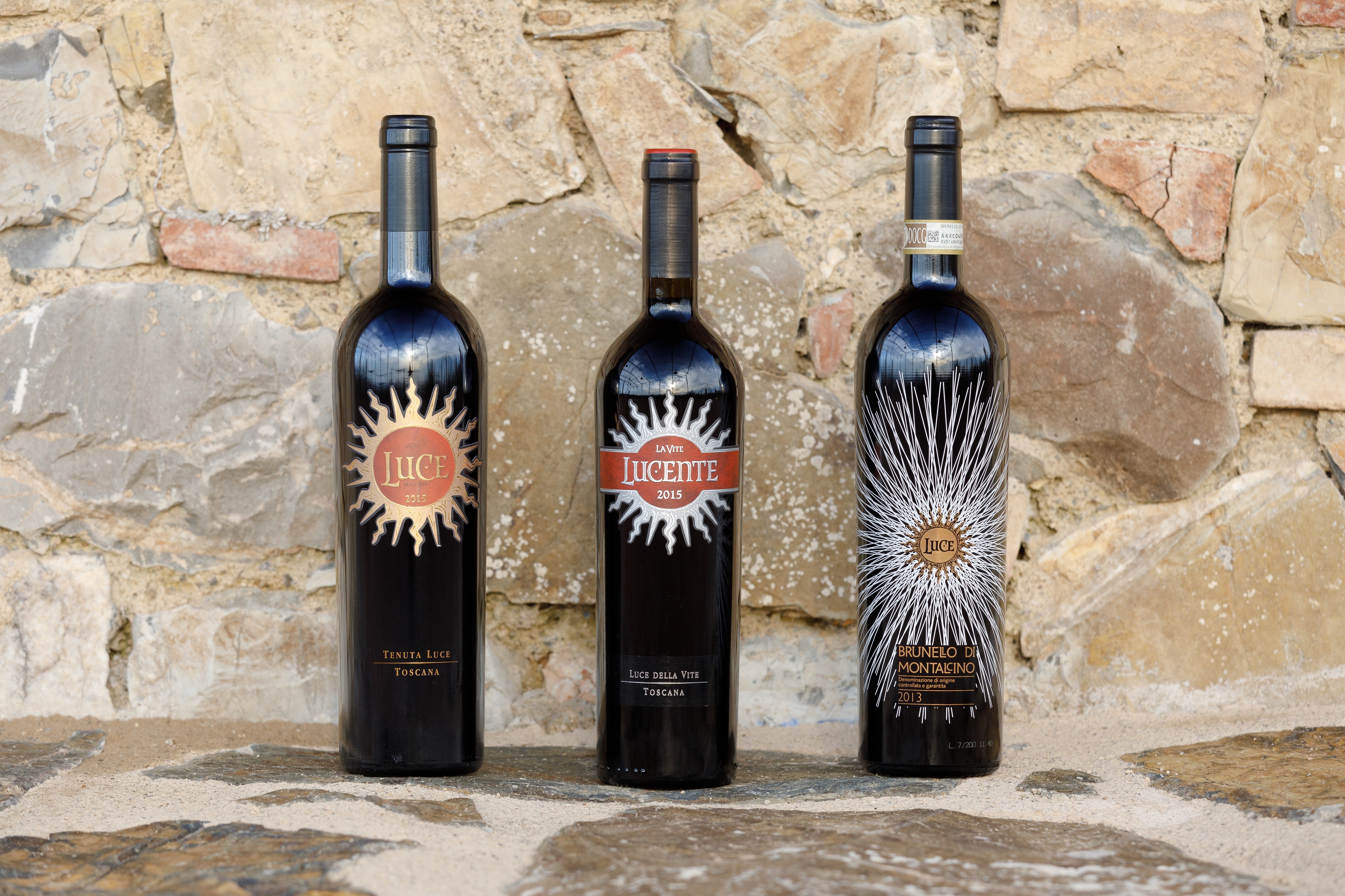 It has a density that
will lighten in years to come, but this is not a
wine to keep in the cellar for twenty years.
It has a density that
will lighten in years to come, but this is not a
wine to keep in the cellar for twenty years.
Lucente 2015 is a second, less expensive label from the estate, with a larger proportion of Merlot to Sangiovese and spending only 12 months in oak. It is, therefore, a lighter version and very ready to drink as a medium-bodied red with ripe fruit right now and at a very, very good price for this quality.
Luce also makes a Brunello di Montalcino, made from just 12 acres, which spends additional time aging in bottle after two years in oak. The 2013 vintage is now on the market and it shows all those elements that a single varietal of real character can muster: dark fruit, a backbone of tannin and a long, satisfying finish. The vintage year had excellent weather, with ideal conditions during a hot summer.
Sales of Luce’s wines are currently about evenly split between Italy and the U.S., at 29% and 25%, with Canada and Germany next, followed by 84 other countries where it may be bought. Ruini sees little interest in Italian wines in China at this time.
Time will tell how heat and rain, or a lack of it, will affect Luce, Tuscany and European vineyards, whose natural terroirs are far more delicate than those of hot weather climates like California and South America.
“Not too long ago,” said Ruini, “most wine
estates in Italy were composed of those who
tended the vineyards and those who worked on the
enology and all other aspects of the winery.
Today, those two segments have to mesh and learn
from each other, if only to keep up with what’s
happening in the air around us.”

CRITERIA FOR
BEING A
JUDGE ON
"TOP CHEF"
“I don’t drink alcohol. I don’t eat fried food. I don’t
eat red meat. I don’t eat any dairy, except low-fat
cottage cheese and non-fat yogurt. I don’t eat sweets. …
Oh, and I don’t eat flour.”—Padma Lakshmi
ALREADY A BIG SELLER AMONG
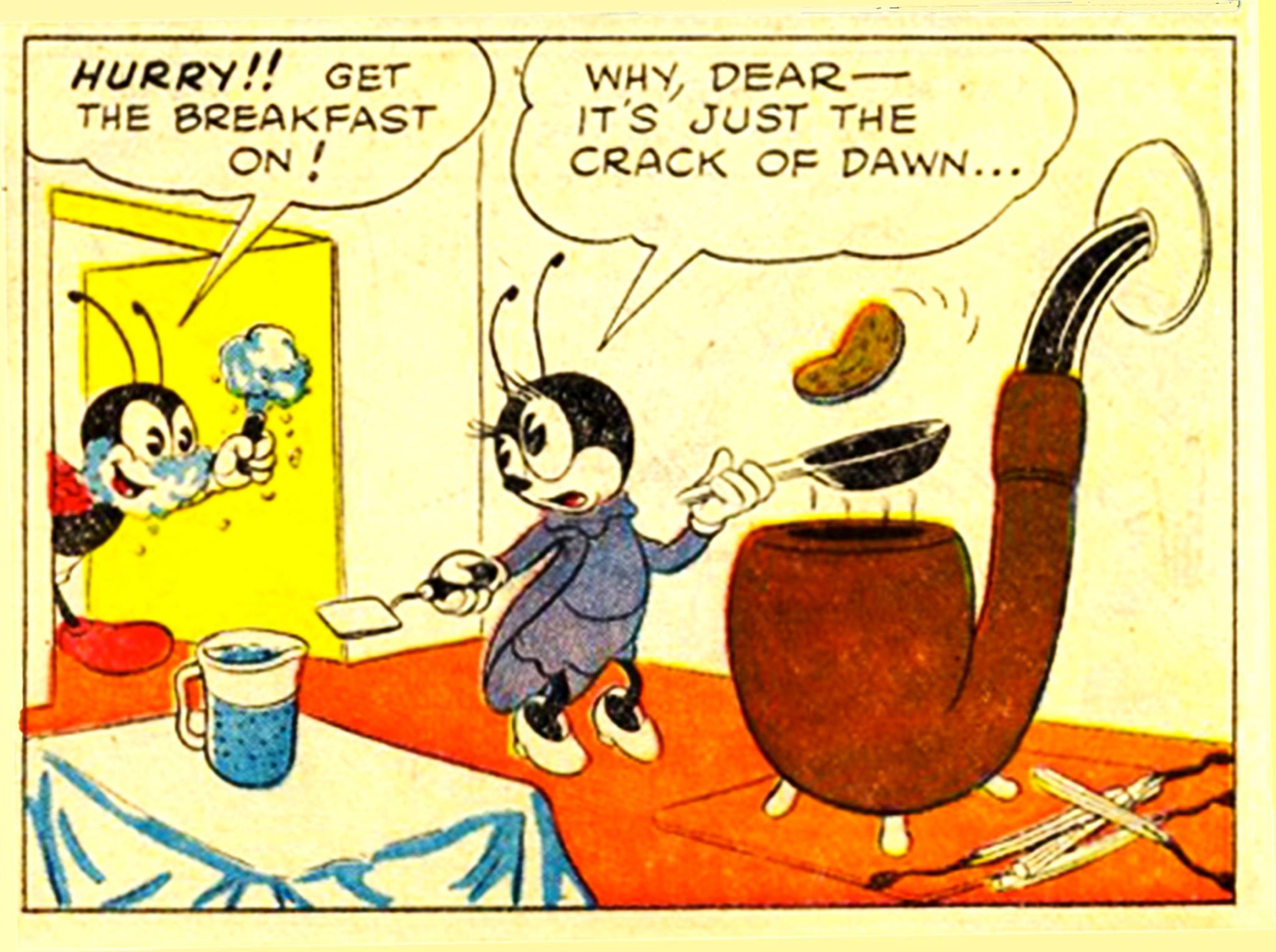
CERTAIN TRIBES IN NEW GUINEA
IKEA is replacing beef in
its burgers with mealworms as part of what the
company calls "fast food of the future." The burger is made from a
mixture of beetroot, parsnips, potatoes, and the "larval
form of a darkling beetle."
Any of John Mariani's books below may be ordered from amazon.com.
 The Hound in Heaven
(21st Century Lion Books) is a novella, and
for anyone who loves dogs, Christmas, romance,
inspiration, even the supernatural, I hope you'll find
this to be a treasured favorite. The story
concerns how, after a New England teacher, his wife and
their two daughters adopt a stray puppy found in their
barn in northern Maine, their lives seem full of promise.
But when tragedy strikes, their wonderful dog Lazarus and
the spirit of Christmas are the only things that may bring
his master back from the edge of despair.
The Hound in Heaven
(21st Century Lion Books) is a novella, and
for anyone who loves dogs, Christmas, romance,
inspiration, even the supernatural, I hope you'll find
this to be a treasured favorite. The story
concerns how, after a New England teacher, his wife and
their two daughters adopt a stray puppy found in their
barn in northern Maine, their lives seem full of promise.
But when tragedy strikes, their wonderful dog Lazarus and
the spirit of Christmas are the only things that may bring
his master back from the edge of despair. WATCH THE VIDEO!
“What a huge surprise turn this story took! I was completely stunned! I truly enjoyed this book and its message.” – Actress Ali MacGraw
“He had me at Page One. The amount of heart, human insight, soul searching, and deft literary strength that John Mariani pours into this airtight novella is vertigo-inducing. Perhaps ‘wow’ would be the best comment.” – James Dalessandro, author of Bohemian Heart and 1906.
“John Mariani’s Hound in Heaven starts with a well-painted portrayal of an American family, along with the requisite dog. A surprise event flips the action of the novel and captures us for a voyage leading to a hopeful and heart-warming message. A page turning, one sitting read, it’s the perfect antidote for the winter and promotion of holiday celebration.” – Ann Pearlman, author of The Christmas Cookie Club and A Gift for my Sister.
“John Mariani’s concise, achingly beautiful novella pulls a literary rabbit out of a hat – a mash-up of the cosmic and the intimate, the tragic and the heart-warming – a Christmas tale for all ages, and all faiths. Read it to your children, read it to yourself… but read it. Early and often. Highly recommended.” – Jay Bonansinga, New York Times bestselling author of Pinkerton’s War, The Sinking of The Eastland, and The Walking Dead: The Road To Woodbury.
“Amazing things happen when you open your heart to an animal. The Hound in Heaven delivers a powerful story of healing that is forged in the spiritual relationship between a man and his best friend. The book brings a message of hope that can enrich our images of family, love, and loss.” – Dr. Barbara Royal, author of The Royal Treatment.
 |
The Encyclopedia of American Food and Drink by John F. Mariani (Bloomsbury USA, $35) Modesty forbids me to praise my own new book, but let me proudly say that it is an extensive revision of the 4th edition that appeared more than a decade ago, before locavores, molecular cuisine, modernist cuisine, the Food Network and so much more, now included. Word origins have been completely updated, as have per capita consumption and production stats. Most important, for the first time since publication in the 1980s, the book includes more than 100 biographies of Americans who have changed the way we cook, eat and drink -- from Fannie Farmer and Julia Child to Robert Mondavi and Thomas Keller. "This book is amazing! It has entries for everything from `abalone' to `zwieback,' plus more than 500 recipes for classic American dishes and drinks."--Devra First, The Boston Globe. "Much needed in any kitchen library."--Bon Appetit. |
"Eating Italian will never be the same after reading John Mariani's entertaining and savory gastronomical history of the cuisine of Italy and how it won over appetites worldwide. . . . This book is such a tasteful narrative that it will literally make you hungry for Italian food and arouse your appetite for gastronomical history."--Don Oldenburg, USA Today. "Italian
restaurants--some good, some glitzy--far
outnumber their French rivals. Many of
these establishments are zestfully described
in How Italian Food Conquered the World, an
entertaining and fact-filled chronicle by
food-and-wine correspondent John F.
Mariani."--Aram Bakshian Jr., Wall Street
Journal.
"Equal parts
history, sociology, gastronomy, and just
plain fun, How Italian Food Conquered the
World tells the captivating and delicious
story of the (let's face it) everybody's
favorite cuisine with clarity, verve and
more than one surprise."--Colman Andrews,
editorial director of The Daily
Meal.com. "A fantastic and fascinating
read, covering everything from the influence
of Venice's spice trade to the impact of
Italian immigrants in America and the
evolution of alta cucina. This book will
serve as a terrific resource to anyone
interested in the real story of Italian
food."--Mary Ann Esposito, host of PBS-TV's
Ciao
Italia. "John Mariani has written the
definitive history of how Italians won their
way into our hearts, minds, and
stomachs. It's a story of pleasure over
pomp and taste over technique."--Danny Meyer,
owner of NYC restaurants Union Square
Cafe, The Modern, and Maialino.
|
 |
 |
 |
 |
 |
 |
 |
 |
 Everett Potter's Travel Report:
Everett Potter's Travel Report: 
 Eating Las Vegas
JOHN CURTAS has been covering the Las Vegas
food and restaurant scene since 1995. He is
the co-author of EATING LAS VEGAS – The 50
Essential Restaurants (as well as
the author of the Eating Las Vegas web site: www.eatinglasvegas.
He can also be seen every Friday morning as
the “resident foodie” for Wake Up With the
Wagners on KSNV TV (NBC) Channel 3 in
Las Vegas.
Eating Las Vegas
JOHN CURTAS has been covering the Las Vegas
food and restaurant scene since 1995. He is
the co-author of EATING LAS VEGAS – The 50
Essential Restaurants (as well as
the author of the Eating Las Vegas web site: www.eatinglasvegas.
He can also be seen every Friday morning as
the “resident foodie” for Wake Up With the
Wagners on KSNV TV (NBC) Channel 3 in
Las Vegas.

MARIANI'S VIRTUAL GOURMET
NEWSLETTER is published weekly. Editor/Publisher: John
Mariani.
Editor: Walter Bagley. Contributing Writers: Christopher Mariani,
Robert Mariani, Misha Mariani, John A. Curtas, Geoff Kalish, Mort
Hochstein, and
Brian Freedman. Contributing Photographer: Galina
Dargery. Technical Advisor: Gerry McLoughlin.
If you wish to subscribe to this
newsletter, please click here: http://www.johnmariani.com/subscribe/index.html
© copyright John Mariani 2017

